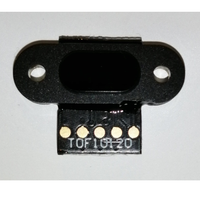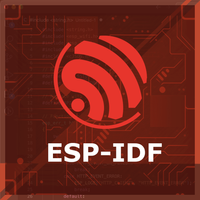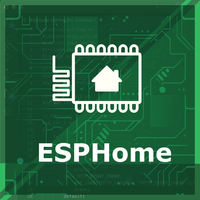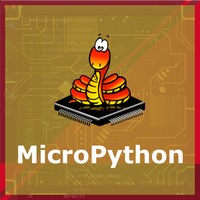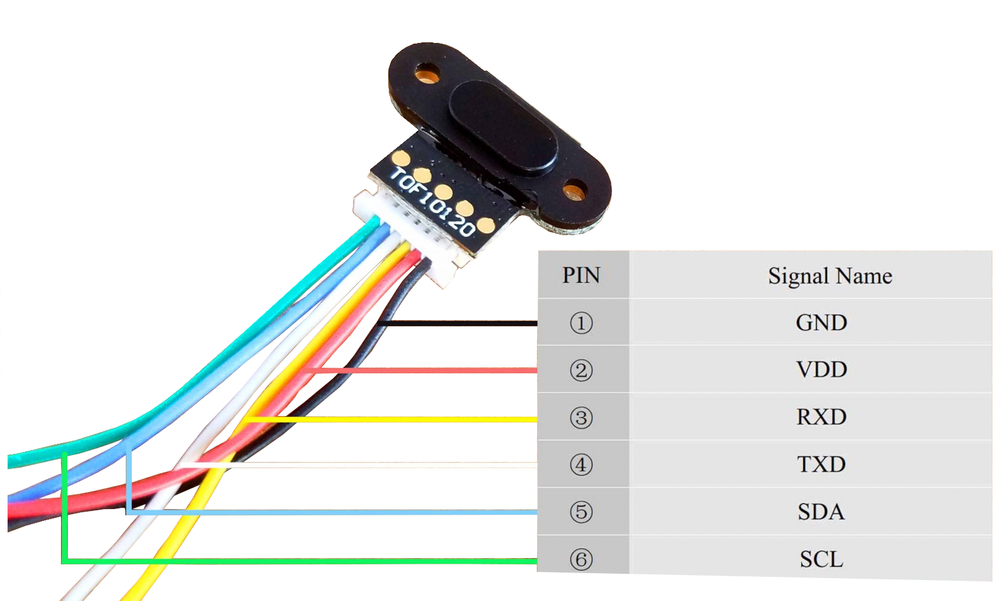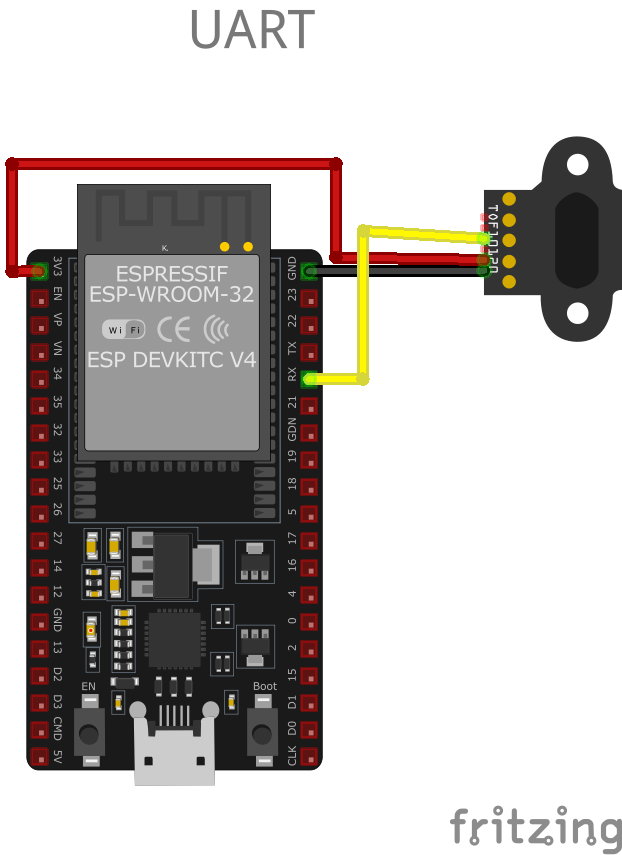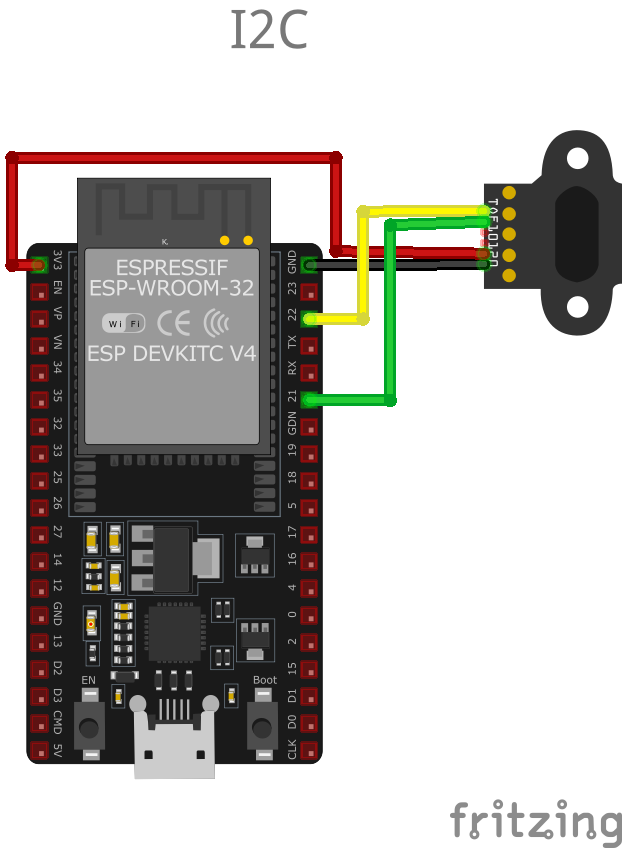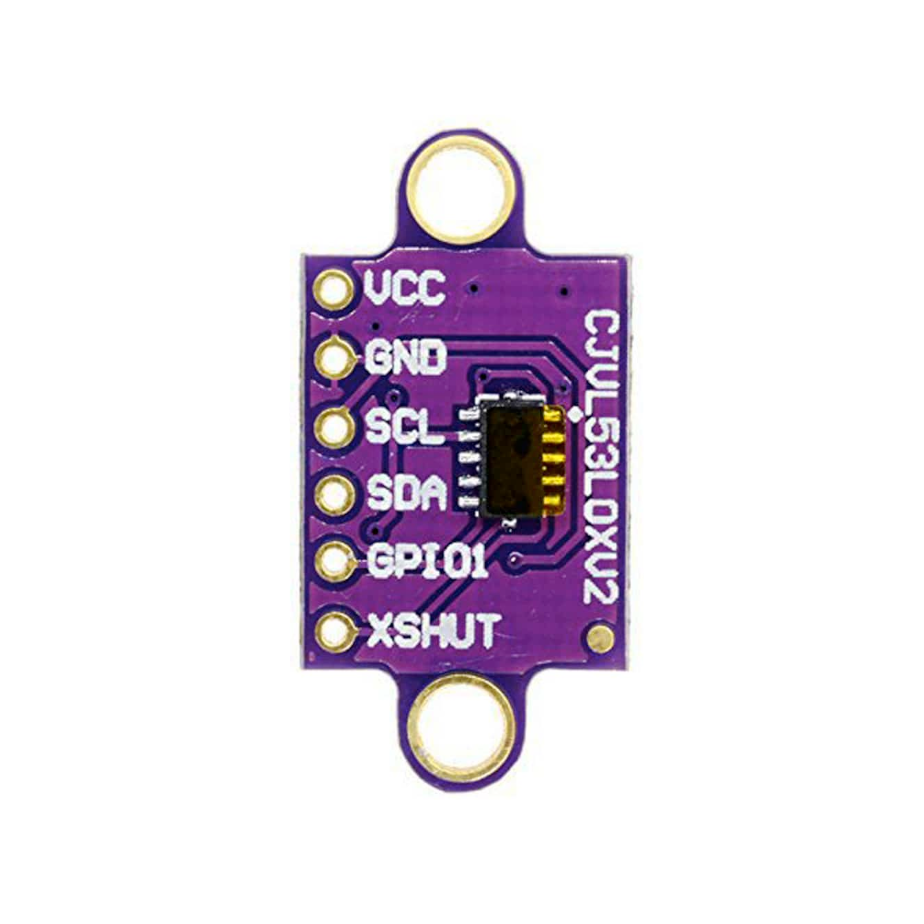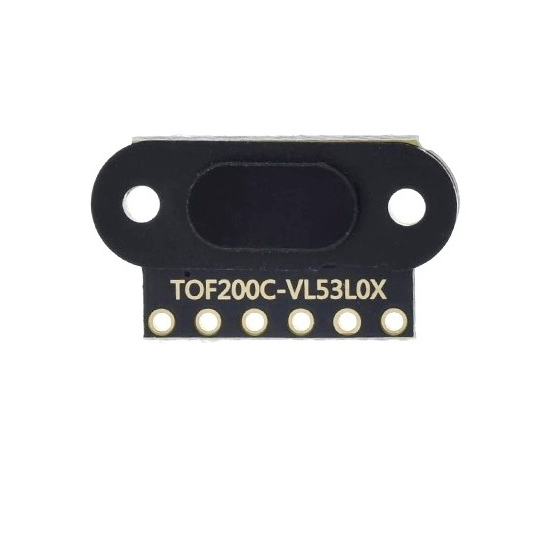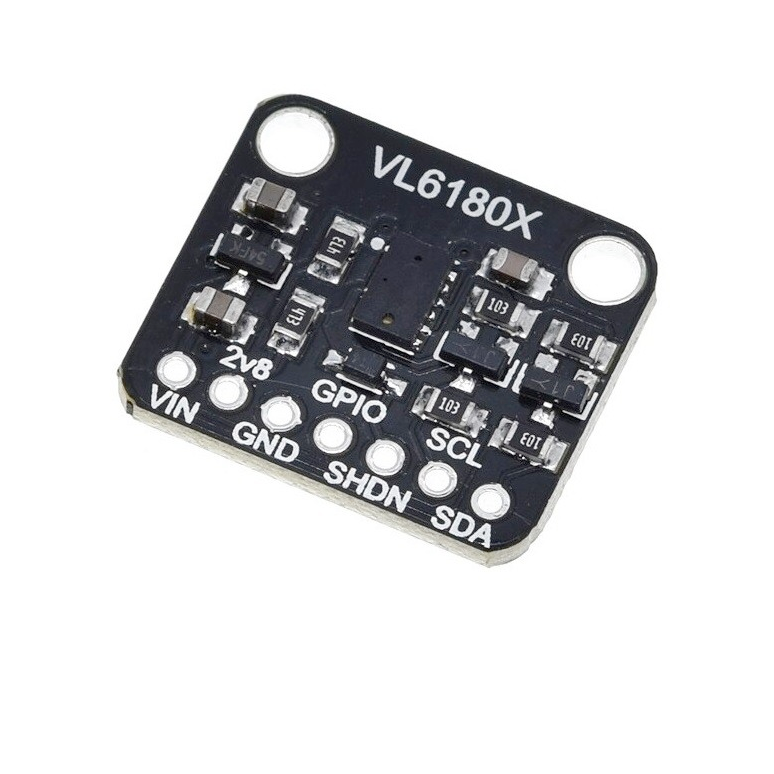ESP32 TOF10120 Laser Distance (Time of Flight) Sensor
Overview
The TOF10120 is an advanced, high-performance laser distance sensor that uses time-of-flight technology to measure distances with remarkable accuracy and speed. Its versatility in supporting both I2C and UART communication makes it ideal for a wide range of applications, including robotics, smart devices, and industrial automation.
About TOF10120 Laser Distance (Time of Flight) Sensor
The TOF10120 is a compact laser distance sensor that uses Time-of-Flight (TOF) technology for accurate and reliable distance measurements. With a measurement range of up to 180 cm and support for I²C and UART communication, it is ideal for robotics, obstacle detection, and proximity sensing applications.
⚡ Key Features
- Accurate Distance Measurement – Measures 10 cm to 180 cm with ±2 cm precision.
- Dual Communication Interface – Supports I²C and UART for flexible integration.
- Low Power Consumption – Operates at <30mA, making it ideal for battery-powered applications.
- Wide Voltage Compatibility – Works with 3.3V to 5V, fully compatible with ESP32 and other microcontrollers.
With its compact design and reliable TOF technology, the TOF10120 is a great choice for embedded systems and robotics applications requiring precise distance sensing. 🚀
Where to Buy



Prices are subject to change. We earn from qualifying purchases as an Amazon Associate.
Technical Specifications
Pinout Configuration
The VCC pin is used to supply power to the sensor, and it typically requires 3.3V or 5V (refer to the datasheet for specific voltage requirements). The GND pin is the ground connection and must be connected to the ground of your ESP32.
The TOF10120 pinout is straightforward, offering both I2C and UART communication options:
- VCC: Connect to a 3.3V or 5V power supply.
- GND: Ground connection to complete the circuit.
- SDA: Data line for I2C communication.
- SCL: Clock line for I2C communication.
- TX: Transmit pin for UART communication.
- RX: Receive pin for UART communication.
Troubleshooting Guide
Common Issues
⚠️ Unstable or Incorrect Distance Measurements
Issue: The TOF10120 sensor provides fluctuating or inaccurate distance readings, even when the target object is stationary.
Possible causes include electrical noise, improper sensor alignment, or interference from ambient light sources.
Solution: Ensure that the sensor is properly aligned perpendicular to the target surface to receive accurate reflections. Minimize exposure to strong ambient light, especially direct sunlight, which can interfere with the sensor's infrared measurements. Implement filtering algorithms, such as averaging multiple readings, to mitigate the effects of occasional erroneous data.
❌ Sensor Not Detected on I2C Bus
Issue: The TOF10120 sensor is not recognized on the I2C bus, leading to communication failures.
Possible causes include incorrect I2C address configuration, improper wiring, or lack of pull-up resistors on the I2C lines.
Solution: Verify that the sensor's I2C address matches the address specified in your code; the default address is 0x52. Ensure that the SDA and SCL lines are correctly connected to the corresponding pins on the microcontroller. Check for the presence of appropriate pull-up resistors (typically 4.7kΩ) on the I2C lines if they are not already included on the sensor module.
🔄 Interference Between Multiple Sensors
Issue: When using multiple TOF10120 sensors simultaneously, their signals interfere with each other, causing inaccurate readings.
Possible causes include identical I2C addresses for all sensors or overlapping measurement zones.
Solution: Since the TOF10120 sensor has a fixed I2C address, using multiple sensors on the same bus requires additional hardware, such as an I2C multiplexer, to manage communication. Alternatively, consider using the sensor's UART mode for communication, assigning different serial ports for each sensor. Physically space the sensors apart to prevent their measurement zones from overlapping, reducing the chance of cross-talk interference.
❓ Unexpected Output Values
Issue: The sensor outputs values that do not correspond to the actual distance, even when the sensor is completely blocked or no object is present.
Possible causes include incorrect data parsing, sensor malfunction, or improper initialization.
Solution: Review the data parsing logic in your code to ensure it correctly interprets the sensor's output format. Confirm that the sensor is properly initialized and that any required calibration procedures are followed. If the issue persists, test the sensor with a known working setup to determine if it is functioning correctly or needs replacement.
Debugging Tips
🔍 Serial Monitor
Use the Serial Monitor to check for error messages and verify the sensor's output. Add debug prints in your code to track the sensor's state.
⚡ Voltage Checks
Use a multimeter to verify voltage levels and check for continuity in your connections. Ensure the power supply is stable and within the sensor's requirements.
Additional Resources
Code Examples
Arduino Example
#include <Wire.h>
#define TOF10120_ADDR 0x52
void setup() {
Serial.begin(115200);
Wire.begin();
Serial.println("TOF10120 Distance Sensor Example");
}
void loop() {
uint16_t distance = getDistance();
if (distance != 0) {
Serial.print("Distance: ");
Serial.print(distance);
Serial.println(" mm");
} else {
Serial.println("Sensor error or no object detected.");
}
delay(500);
}
uint16_t getDistance() {
Wire.beginTransmission(TOF10120_ADDR);
Wire.write(0x00);
Wire.endTransmission();
Wire.requestFrom(TOF10120_ADDR, 2);
if (Wire.available() == 2) {
uint16_t distance = Wire.read() << 8 | Wire.read();
return distance;
}
return 0;
}0x52). The getDistance() function sends a request to the sensor to initiate a distance measurement and then reads the resulting two-byte data. The calculated distance (in millimeters) is displayed on the Serial Monitor, with a 500 ms delay between readings.ESP-IDF Example
#include <stdio.h>
#include "driver/i2c.h"
#include "esp_log.h"
#define I2C_MASTER_NUM I2C_NUM_0
#define I2C_MASTER_SDA_IO 21
#define I2C_MASTER_SCL_IO 22
#define I2C_MASTER_FREQ_HZ 100000
#define TOF10120_ADDR 0x52
static const char *TAG = "TOF10120";
void app_main() {
i2c_config_t i2c_config = {
.mode = I2C_MODE_MASTER,
.sda_io_num = I2C_MASTER_SDA_IO,
.scl_io_num = I2C_MASTER_SCL_IO,
.sda_pullup_en = GPIO_PULLUP_ENABLE,
.scl_pullup_en = GPIO_PULLUP_ENABLE,
.master.clk_speed = I2C_MASTER_FREQ_HZ,
};
ESP_ERROR_CHECK(i2c_param_config(I2C_MASTER_NUM, &i2c_config));
ESP_ERROR_CHECK(i2c_driver_install(I2C_MASTER_NUM, I2C_MODE_MASTER, 0, 0, 0));
uint8_t data[2];
while (1) {
i2c_master_write_to_device(I2C_MASTER_NUM, TOF10120_ADDR, NULL, 0, 1000 / portTICK_PERIOD_MS);
i2c_master_read_from_device(I2C_MASTER_NUM, TOF10120_ADDR, data, 2, 1000 / portTICK_PERIOD_MS);
uint16_t distance = (data[0] << 8) | data[1];
ESP_LOGI(TAG, "Distance: %d mm", distance);
vTaskDelay(500 / portTICK_PERIOD_MS);
}
}0x52). A loop sends a command to read distance data from the sensor and parses the response into a 16-bit distance value (in millimeters). The distance is logged every 500 ms. Error handling ensures the loop continues if communication issues occur.ESPHome Example
sensor:
- platform: tof10120
name: "TOF10120 Distance"
update_interval: 500mstof10120 platform to interface with the sensor. The name assigns a user-friendly label ('TOF10120 Distance') to the sensor data, making it identifiable in smart home platforms. The update_interval is set to 500 ms for frequent distance updates.PlatformIO Example
platformio.ini
[env:esp32dev]
platform = espressif32
board = esp32dev
framework = arduino
monitor_speed = 115200PlatformIO Example Code
#include <Wire.h>
#define TOF10120_ADDR 0x52
void setup() {
Serial.begin(115200);
Wire.begin();
Serial.println("TOF10120 Distance Sensor Example");
}
void loop() {
uint16_t distance = getDistance();
if (distance != 0) {
Serial.print("Distance: ");
Serial.print(distance);
Serial.println(" mm");
} else {
Serial.println("Sensor error or no object detected.");
}
delay(500);
}
uint16_t getDistance() {
Wire.beginTransmission(TOF10120_ADDR);
Wire.write(0x00);
Wire.endTransmission();
Wire.requestFrom(TOF10120_ADDR, 2);
if (Wire.available() == 2) {
uint16_t distance = Wire.read() << 8 | Wire.read();
return distance;
}
return 0;
}getDistance() function sends a command to the sensor and retrieves a 2-byte distance value, which is then displayed on the Serial Monitor every 500 ms. The 0x52 I2C address is used for communication. This example is compatible with Arduino-compatible ESP32 boards using the PlatformIO environment.MicroPython Example
from machine import I2C, Pin
from time import sleep
# Initialize I2C communication (SDA = GPIO21, SCL = GPIO22)
i2c = I2C(0, scl=Pin(22), sda=Pin(21))
# TOF10120 I2C Address
tof_address = 0x52
def read_distance():
# Request distance measurement
i2c.writeto(tof_address, b'\x00')
data = i2c.readfrom(tof_address, 2)
# Parse two-byte response
distance = (data[0] << 8) | data[1]
return distance
print("TOF10120 Distance Sensor Example")
while True:
distance = read_distance()
print("Distance: {} mm".format(distance))
sleep(0.5)read_distance() function sends a command to the sensor and reads a 2-byte response, converting it to a 16-bit distance value. The distance is displayed on the console every 500 ms.Conclusion
The ESP32 TOF10120 Laser Distance (Time of Flight) Sensor is a powerful distance sensor that offers excellent performance and reliability. With support for multiple development platforms including Arduino, ESP-IDF, ESPHome, PlatformIO, and MicroPython, it's a versatile choice for your IoT projects.
For optimal performance, ensure proper wiring and follow the recommended configuration for your chosen development platform.
Always verify power supply requirements and pin connections before powering up your project to avoid potential damage.
